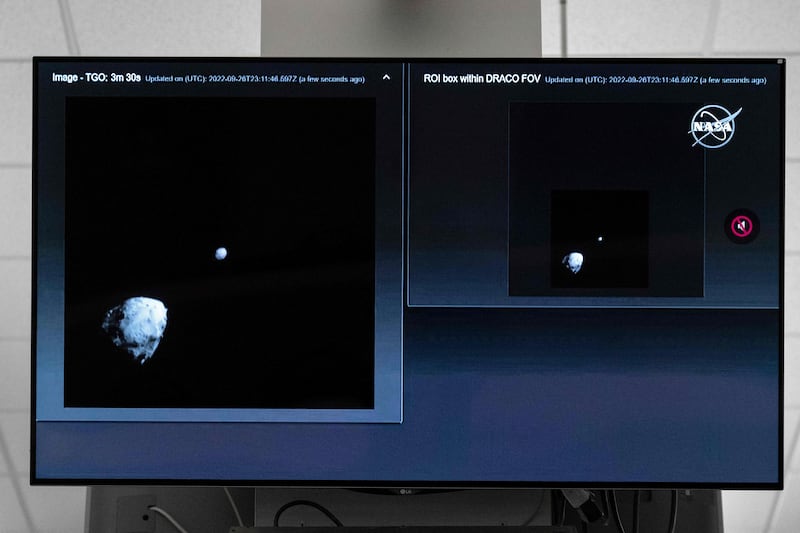A spacecraft operated by the US space agency Nasa has deliberately smashed into an asteroid in a test of a technique that may be used to protect the Earth.
The spacecraft collision was aimed at determining whether adjusting the course of an asteroid in space was possible.
Instruments in space and telescopes on Earth will now seek to measure whether the crash succeeded in changing the path of the asteroid.
Nasa’s Double Asteroid Redirection Test (Dart) was a $300 million (€312 million) mission launched in November 2021 in what was essentially the first test of technology that could be used in the future to deflect an object in space that was heading towards Earth on a path to hit the planet.
A middle-class millennial at a Kneecap gig: am I just cosplaying at republicanism?
What should I do if my electric car breaks down?
Matt Williams: In cynical times, savour the new coaches who want to make the world a bit better
Political stupidity of Fianna Fáil four could see Ireland end up with a bottom-of-the-barrel job in Europe
The target for the test was an asteroid called Dimorphos which is about 11 million km from Earth. It is about 150m wide and orbits another nearby larger asteroid.
The spacecraft, which is about the size of a fridge, was designed to hit Dimorphos at about 22,500km/h to adjust the asteroid’s course.
Shortly before 12.15am in Ireland on Tuesday a camera on the Dart spacecraft captured the final approach to Dimorphos before the screen went dark at the moment of impact.
Nasa administrator Bill Nelson said after the impact that the space agency was showing it was “very possible to save the planet” from the impact of an object from space.

He said years of hard work had gone into the Dart mission and that “one day it will teach us to protect our own planet from an incoming asteroid”.
“I look forward to learning what is happening from the observatories so they can tell us about the changes in this asteroid’s orbit”, he said.
At present Dimorphos completes an orbit around the larger asteroid, known as Didymos, every 11 hours 55 minutes.
If the test worked as planned the spacecraft should, by crashing into Dimorphos, have changed its course, resulting in it taking less time in future to travel around the nearby larger asteroid – potentially by about ten minutes.
The magnitude of the change was set to depend on the structure and composition of Dimorphos – whether it is a solid mass or rocks held together by gravity.
The European Space Agency is scheduled to send a follow-up spacecraft, named Hera, that will visit Didymos and Dimorphos to examine the effects of the impact of the Dart collision. The Hera mission is expected to launch in October 2024 and arrive towards the end of 2026.
Prof Alan Fitzsimmons of Queen’s University in Belfast said the Dart mission “will give us our first proof that we have the technology to prevent a small asteroid hitting Earth”.
Prof Fitzsimmons, a member of the Dart investigation team, said the current mission and its planned follow-up should provide a much better idea about “how to protect ourselves against a catastrophic impact”.
In 2005 the US Congress mandated Nasa to find, by 2020, 90 per cent of near-Earth asteroids that were sufficiently large to destroy a city if they hit the planet. These are considered to be those close to 150m or wider in diameter. However, the task remains only half completed.




